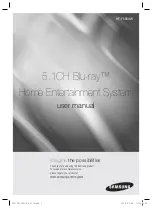
Chapter 8. System upgrades
317
8.2 Concurrent upgrades
Concurrent upgrades on z13s servers can provide extra capacity with no server outage. In
most cases, with prior planning and OS support, a concurrent upgrade is nondisruptive to the
OS.
Given today’s business environment, the benefits of the concurrent capacity growth
capabilities that are provided by z13s servers are plentiful. They include, but are not limited to,
the following benefits:
Enabling the exploitation of new business opportunities
Supporting the growth of smart environments
Managing the risk of volatile, high-growth, and high-volume applications
Supporting 24x365 application availability
Enabling capacity growth during
lockdown
periods
Enabling planned-downtime changes without affecting availability
These capabilities are based on the flexibility of the design and structure, which enables
concurrent hardware installation and LIC control over the configuration.
Subcapacity models provide for a CP capacity increase in two dimensions that can be used
together to deliver configuration granularity. The first dimension is by adding CPs to the
configuration, and the second dimension is by changing the capacity setting of the CPs
currently installed to a higher MCI. In addition, a capacity increase can be delivered by
increasing the CP capacity setting, and at the same time decreasing the number of active
CPs.
z13s servers support the concurrent addition of processors to a running logical partition
(LPAR). As a result, you can have a flexible infrastructure in which you can add capacity
without pre-planning. The OS running on the CPC also needs to support the dynamic addition
of processors resources.
Another function concerns the system assist processor (SAP). When extra SAPs are
concurrently added to the configuration, the SAP-to-channel affinity is dynamically remapped
on all SAPs on the z13s server to rebalance the I/O configuration.
Additionally, zBX Blade features can be installed concurrently if their entitlement exists.
8.2.1 Model upgrades
z13s servers have the following machine types and models, and MCIs:
Machine type and model are 2965-N
vv. The vv can be 10 or 20. The model number
indicates how many PUs (
vv) are available for customer characterization. Model 10 has
one CPC drawer, and Model N20 can have one or two CPC drawers.
MCIs are A01 to Z06. The MCI describes how many CPs are characterized (01 - 06) and
the capacity setting (A to Z) of the CPs.
A hardware configuration upgrade might require more physical hardware (processor or I/O
drawers, or both). A z13s upgrade can change either, or both, the server model and the MCI.
Summary of Contents for z13s
Page 2: ......
Page 3: ...International Technical Support Organization IBM z13s Technical Guide June 2016 SG24 8294 00 ...
Page 24: ...THIS PAGE INTENTIONALLY LEFT BLANK ...
Page 164: ...136 IBM z13s Technical Guide ...
Page 226: ...198 IBM z13s Technical Guide ...
Page 256: ...228 IBM z13s Technical Guide ...
Page 414: ...386 IBM z13s Technical Guide ...
Page 464: ...436 IBM z13s Technical Guide ...
Page 476: ...448 IBM z13s Technical Guide ...
Page 498: ...470 IBM z13s Technical Guide ...
Page 502: ...474 IBM z13s Technical Guide ...
Page 568: ...540 IBM z13s Technical Guide ...
Page 578: ...550 IBM z13s Technical Guide ...
Page 584: ...556 IBM z13s Technical Guide ...
Page 585: ...ISBN 0738441678 SG24 8294 00 1 0 spine 0 875 1 498 460 788 pages IBM z13s Technical Guide ...
Page 586: ......
Page 587: ......
Page 588: ...ibm com redbooks Printed in U S A Back cover ISBN 0738441678 SG24 8294 00 ...
















































